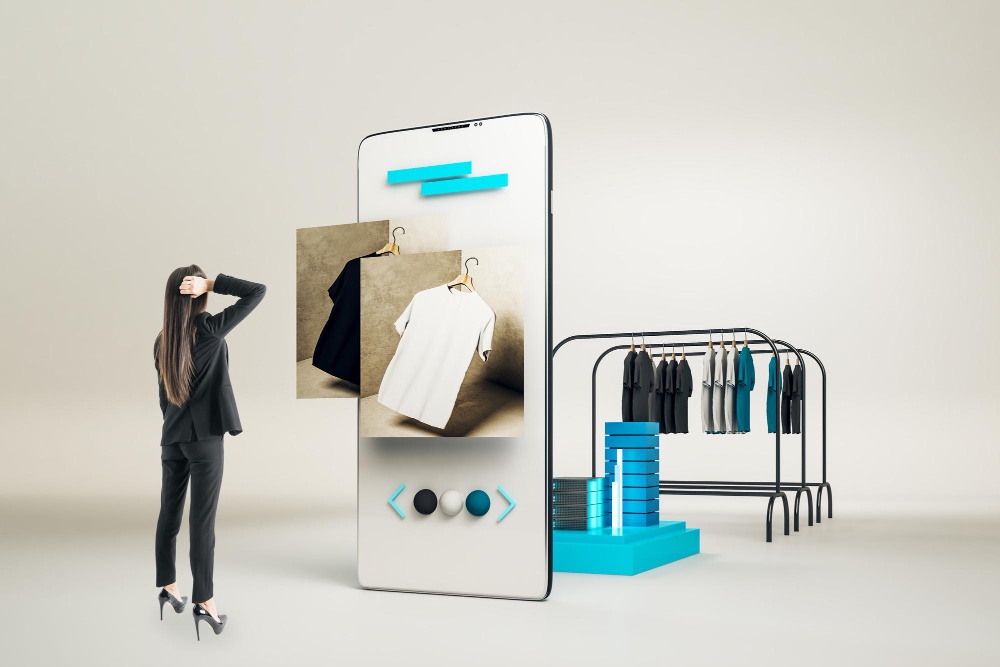Introduction:
In the rapidly evolving landscape of e-commerce, businesses are constantly seeking innovative ways to enhance user experiences and stay ahead of the competition. Augmented Reality (AR) has emerged as a groundbreaking technology that holds the potential to revolutionize the way we shop online. By blending the digital and physical worlds, AR creates immersive and interactive experiences, making it an ideal candidate for transforming e-commerce applications. In this article, we will explore the concept of building an Augmented Reality-powered e-commerce app to provide users with seamless and engaging shopping experiences.
Understanding Augmented Reality
Augmented Reality is a technology that overlays digital information, such as images, sounds, or text, onto the real-world environment. Unlike Virtual Reality (VR), which immerses users in a completely virtual environment, AR enhances the real-world experience by adding digital elements. The integration of AR in e-commerce apps opens up new possibilities for users to interact with products in ways previously unimaginable.
Benefits of Augmented Reality in E-commerce
-
Enhanced Product Visualization: AR allows users to visualize products in their real-world surroundings before making a purchase. Whether it's trying out furniture in a living room or testing how a pair of shoes looks on their feet, AR provides a level of interactivity that traditional e-commerce platforms lack.
-
Increased Customer Engagement: The interactive nature of AR engages users more effectively than static images or descriptions. By offering an immersive shopping experience, e-commerce businesses can captivate their audience and keep them on their platform for longer periods.
-
Reduced Product Returns: One of the challenges in online shopping is the discrepancy between expectations and reality when the product arrives. AR helps bridge this gap by allowing customers to virtually try products, leading to more informed purchase decisions and, consequently, reducing the likelihood of returns.
-
Personalized Shopping Experiences: AR can be leveraged to provide personalized recommendations based on user preferences and browsing history. By analyzing user behavior, the app can suggest products that align with the individual's tastes, creating a tailored shopping experience.
Building an Augmented Reality-Powered E-commerce App
-
Define Objectives and Target Audience: Before embarking on the development process, it's crucial to clearly define the objectives of integrating AR into the e-commerce app. Understand the target audience and how AR can enhance their shopping journey.
-
Choose the Right AR Technology: There are various AR technologies available, including marker-based AR, markerless AR, and location-based AR. Select the technology that aligns with the goals of your e-commerce app and provides the desired level of interactivity.
-
Develop a User-Friendly Interface: The success of an e-commerce app heavily relies on its user interface. Ensure that the AR features seamlessly integrate into the app's design, providing a cohesive and user-friendly experience.
-
Implement 3D Models and Tracking: To enable users to visualize products in their real-world environment, incorporate high-quality 3D models of the products. Implement robust tracking mechanisms to ensure that AR elements accurately interact with the physical world.
-
Optimize for Mobile Platforms: Given that most users access e-commerce apps through mobile devices, it's crucial to optimize AR features for smartphones and tablets. Consider factors such as performance, compatibility, and responsiveness. You can also choose cross platform mobile app development company that can help you to develop cross-platform application for your bsuiness.
-
Integrate Secure Payment Gateways: Security is paramount in e-commerce, and integrating secure payment gateways is non-negotiable. Ensure that the AR-powered app maintains the same level of security as traditional e-commerce platforms.
-
Test Extensively: Thorough testing is essential to identify and address any potential bugs or glitches in the AR features. Conduct user testing to gather feedback and make iterative improvements based on user experiences.
Case Studies of Successful AR-Powered E-commerce Apps
-
IKEA Place: IKEA Place is a prime example of how AR can revolutionize the furniture shopping experience. The app allows users to virtually place IKEA furniture in their homes to see how it fits and looks before making a purchase.
-
Sephora Virtual Artist: Sephora's Virtual Artist app utilizes AR to enable users to try on different makeup products virtually. This immersive experience not only enhances customer engagement but also helps users make more informed cosmetic choices.
-
Warby Parker: Warby Parker, an online eyewear retailer, integrates AR to provide users with a virtual try-on experience for glasses. This feature has significantly reduced the hesitation associated with buying eyeglasses online.
Challenges and Future Trends
While the integration of AR in e-commerce apps brings numerous benefits, it also presents certain challenges. One of the primary challenges is the need for widespread adoption of AR-capable devices. As technology continues to advance, and more users embrace AR-enabled smartphones and wearables, these challenges are expected to diminish.
The future of AR in e-commerce looks promising, with ongoing advancements in AR hardware and software. The incorporation of Artificial Intelligence (AI) into AR applications will further enhance personalization and recommendation capabilities, providing users with highly tailored shopping experiences.
Conclusion
Building an Augmented Reality-powered e-commerce app represents a strategic move for businesses looking to stay competitive in the dynamic online retail landscape. By leveraging AR technology, e-commerce platforms can offer users immersive and interactive shopping experiences that go beyond traditional online shopping. As AR continues to evolve and gain widespread adoption, it is poised to become an integral component of the future of e-commerce, redefining how consumers browse, choose, and purchase products in the digital age. Hire ecommerce app development company for building ecommerce application for your business.


No comments yet